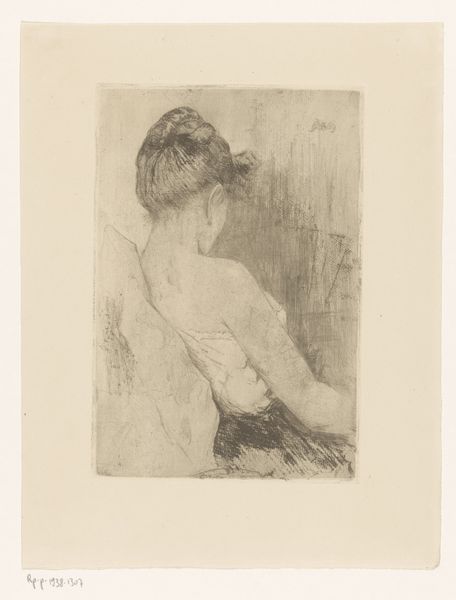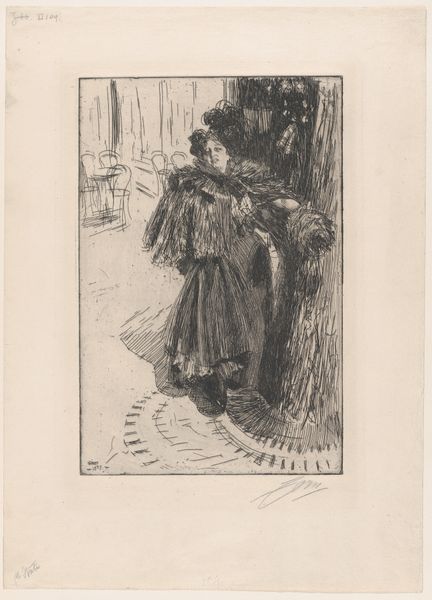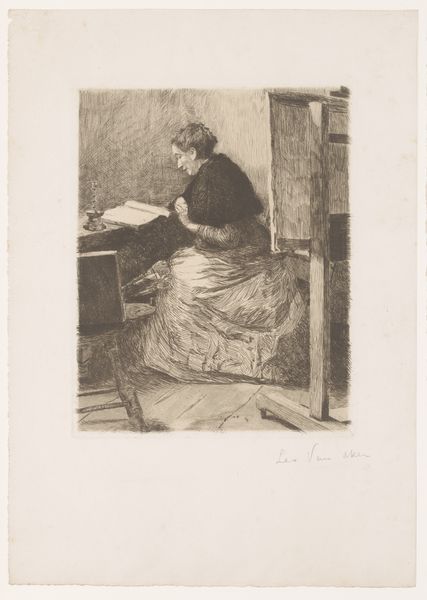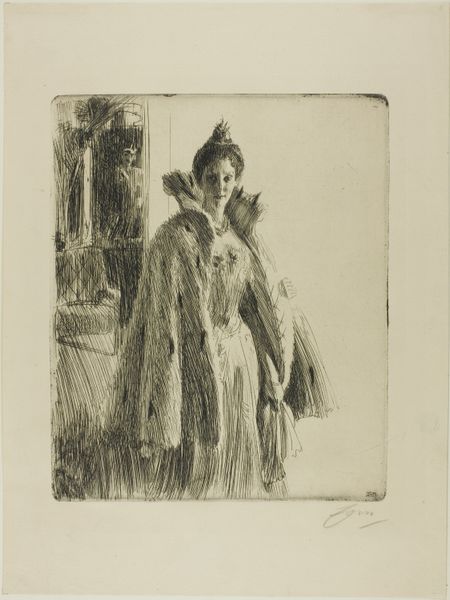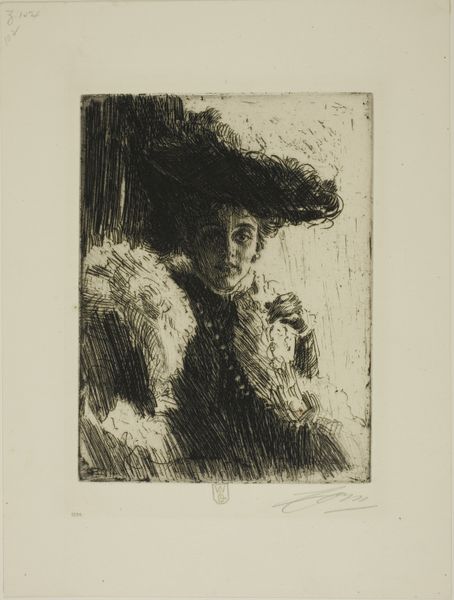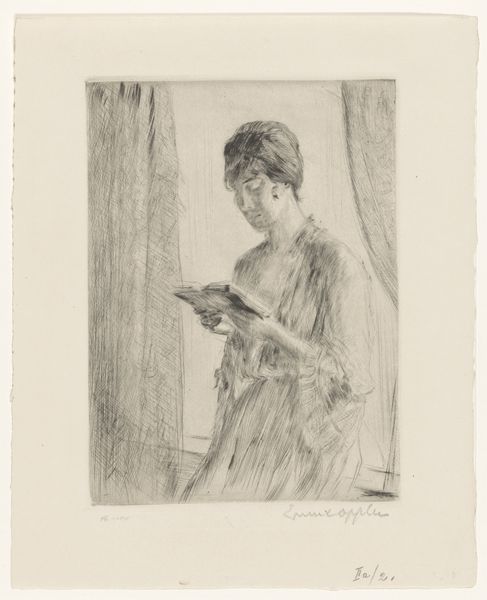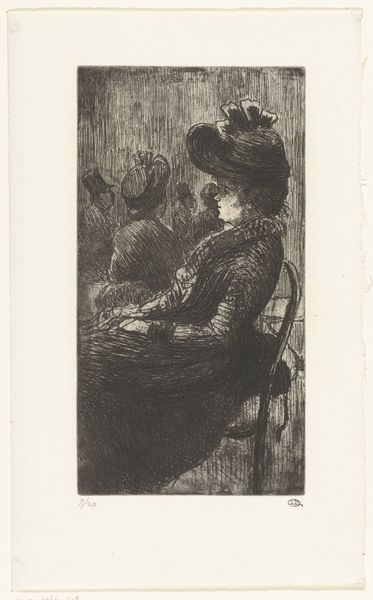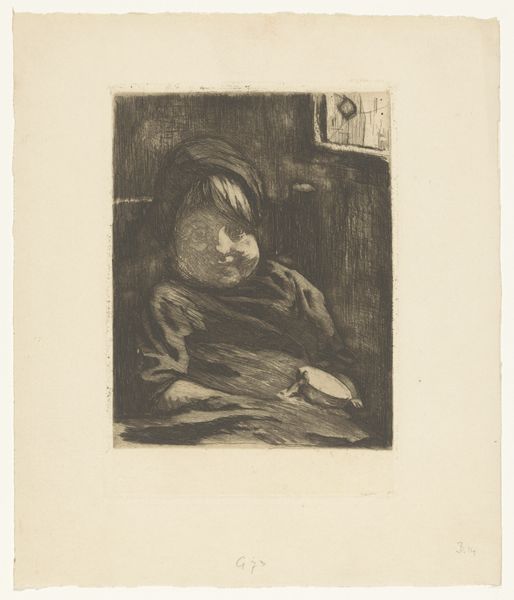
print, etching
#
portrait
# print
#
etching
#
genre-painting
#
realism
Dimensions: height 340 mm, width 295 mm
Copyright: Rijks Museum: Open Domain
Editor: Here we have "Woman playing guitar in a chair" by Albert Roelofs, dating from around 1887 to 1920. It's an etching, so a print, with a focus on a seated woman. What strikes me is the intimacy of the scene. What do you see in this piece, particularly concerning what the imagery may tell us about its historical time period? Curator: What captures me are the layered meanings inherent in this domestic scene. Look at how the guitar, more than just a musical instrument, acts as a signifier of both leisure and perhaps a subtle assertion of female artistic expression within the home. In those times, the image challenges strict roles assigned to women. The act of creating art – even private art – can be seen as quietly subversive. Does her posture suggest self-possession or retreat to you? Editor: I initially read her posture as inward, contemplative, but the guitar introduces a counter-narrative. Could the print's medium itself, etching, contribute to understanding? Curator: Absolutely. Etching, with its fine lines and potential for nuanced detail, speaks to the interiority of the scene. The delicate quality underscores both the fragility of the moment and, arguably, the limited sphere within which women often found themselves creating. Does this artwork remind you of similar images or motifs from that era? Editor: It reminds me a bit of paintings by female impressionists, showing similar domestic moments. I see the guitar as more than decoration and the moment as something to savor. Curator: Yes, it resonates with that sense of quiet domesticity and burgeoning female identity, even rebellion through artistic exploration. What a rich conversation this piece inspires. Editor: I hadn't considered how seemingly simple scenes held those underlying meanings. It definitely provides more context than what you'd think on a cursory examination.
Comments
No comments
Be the first to comment and join the conversation on the ultimate creative platform.
